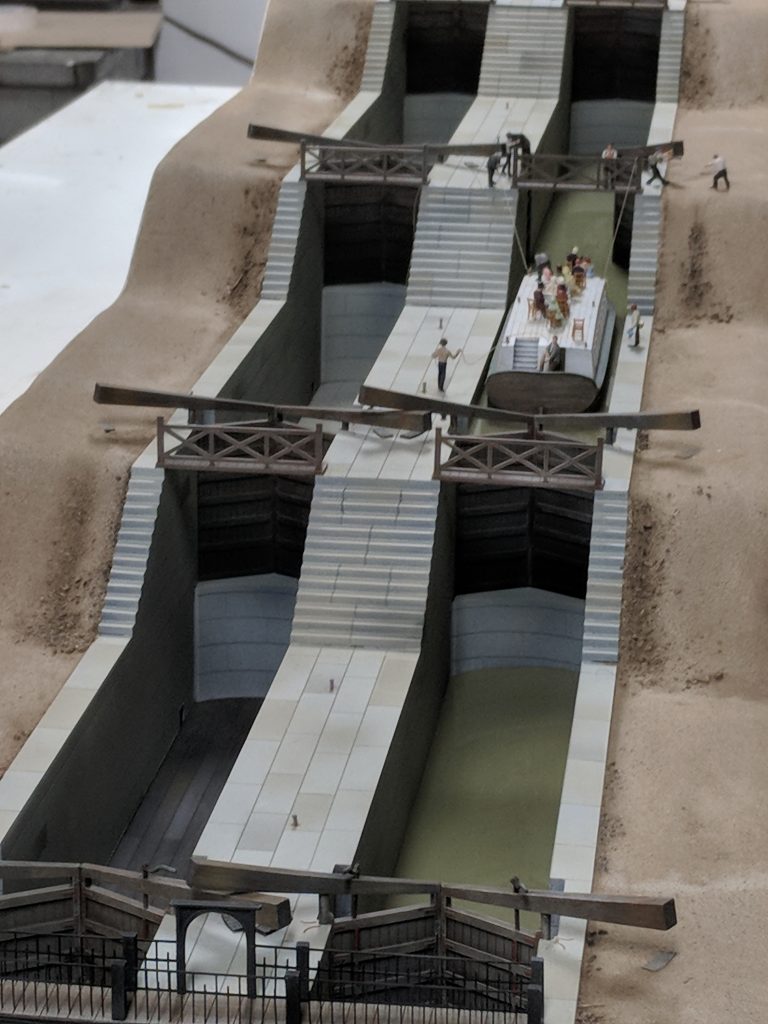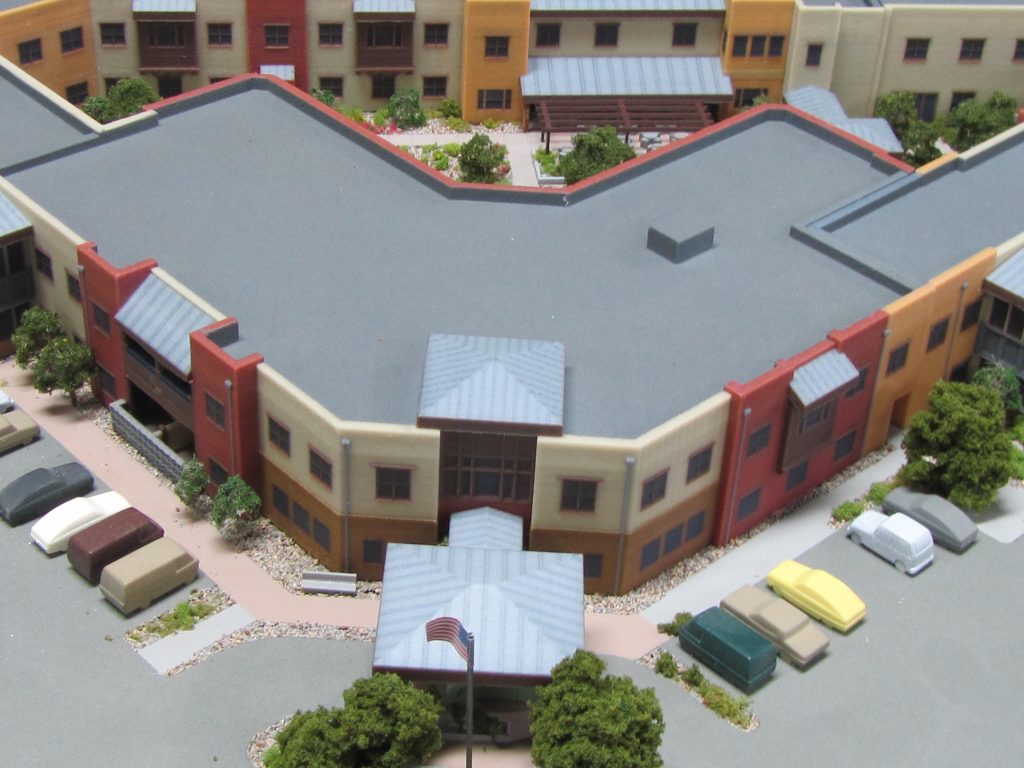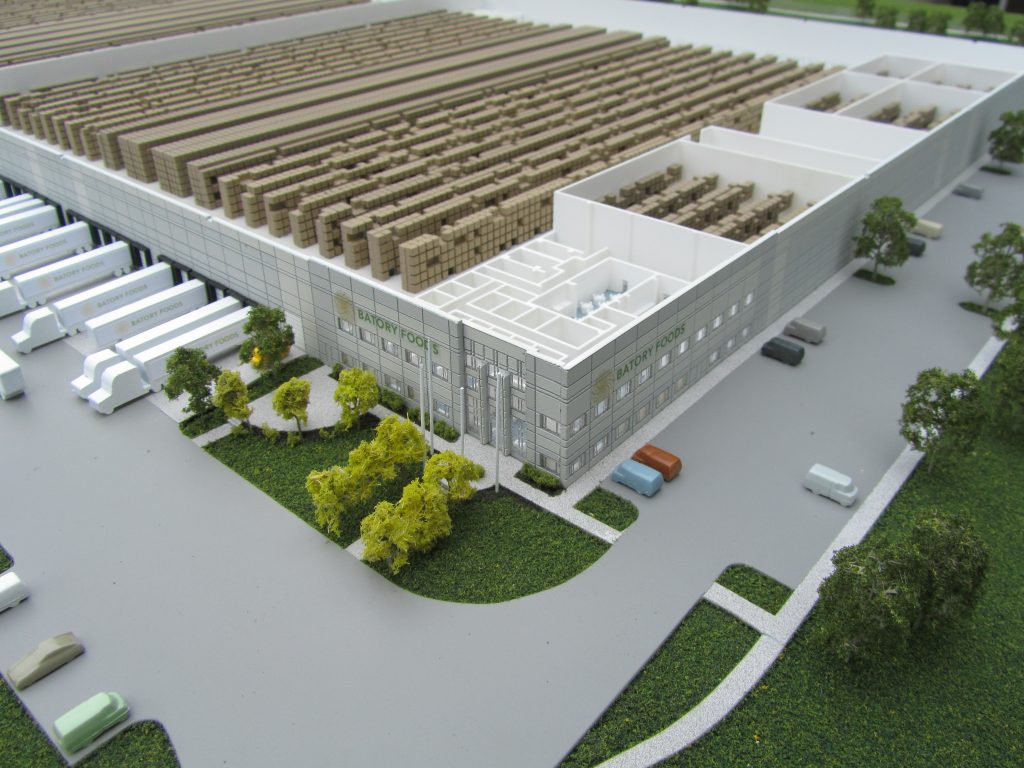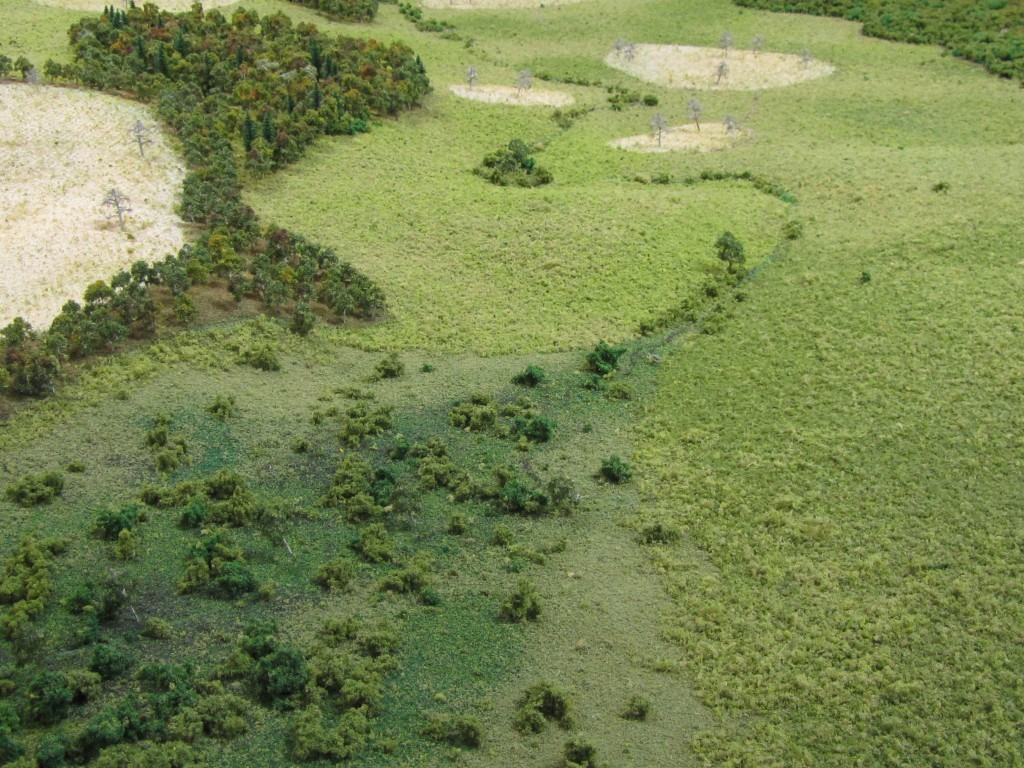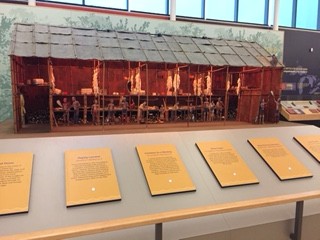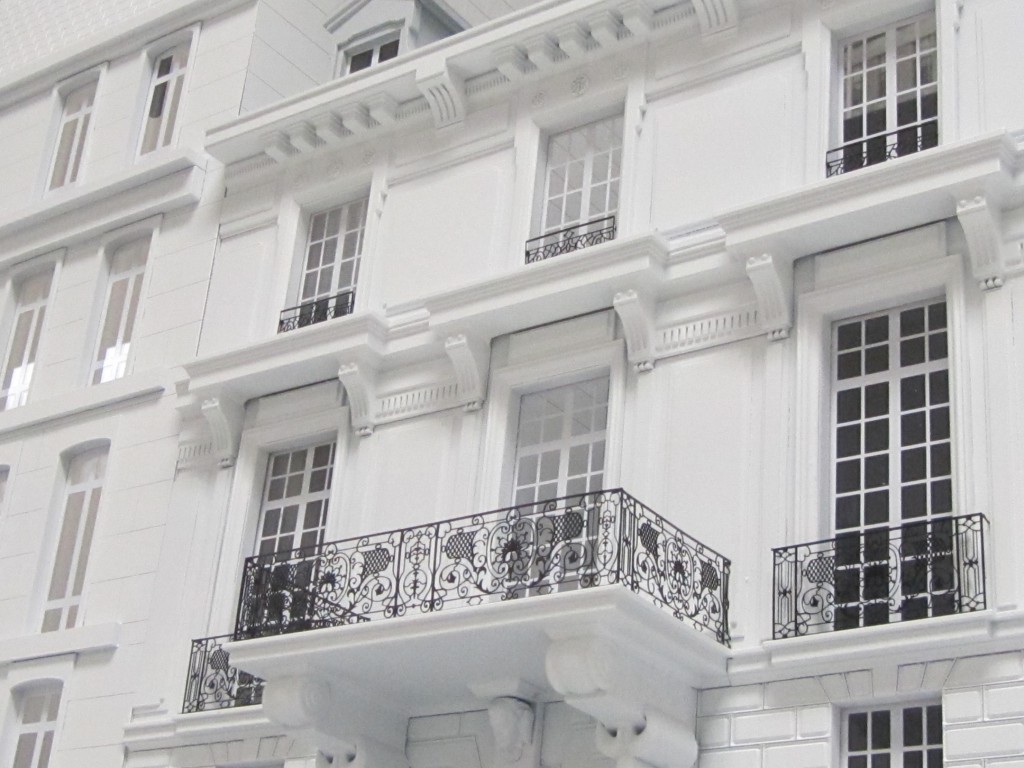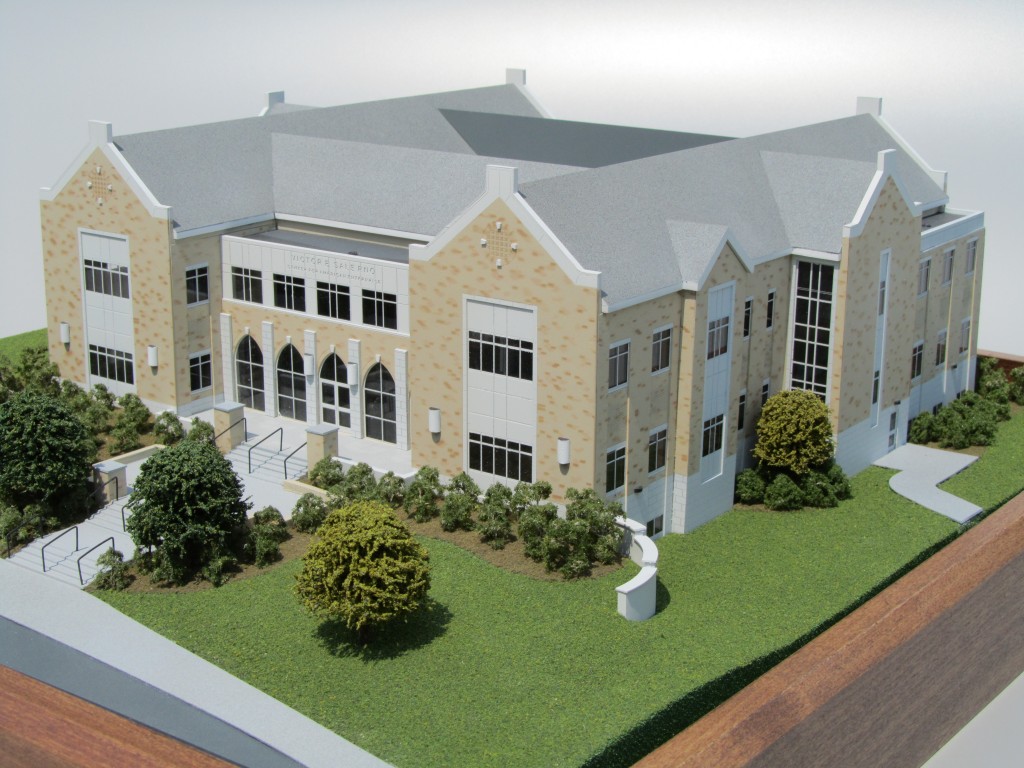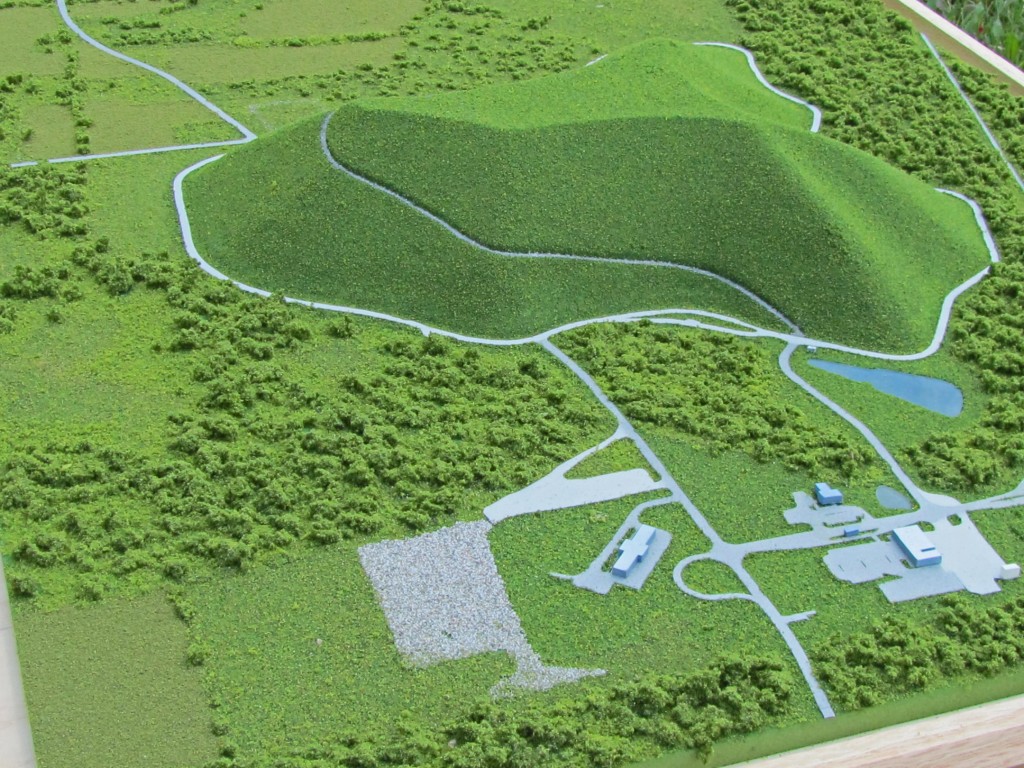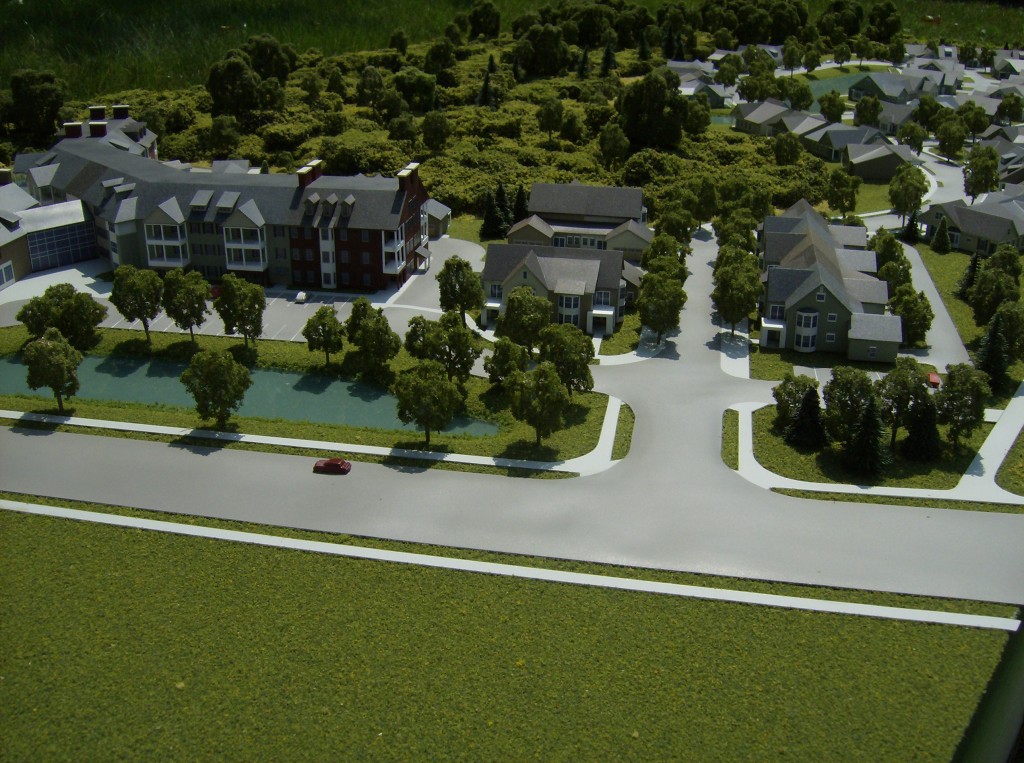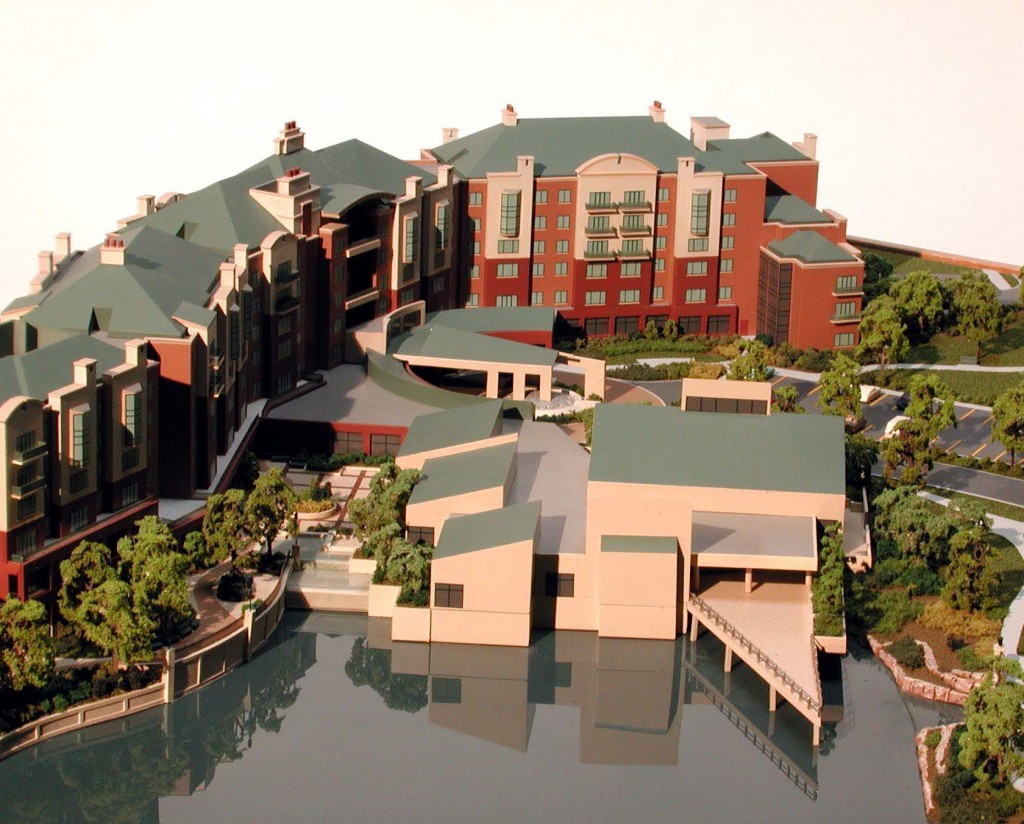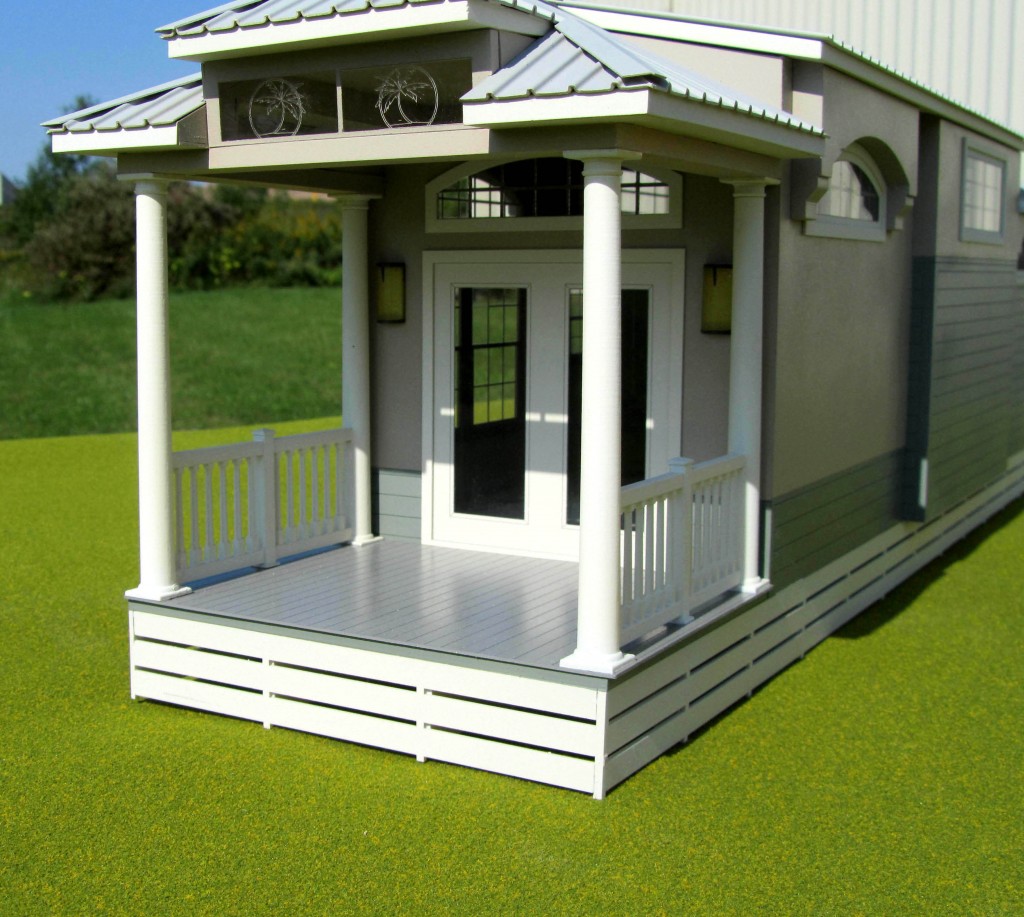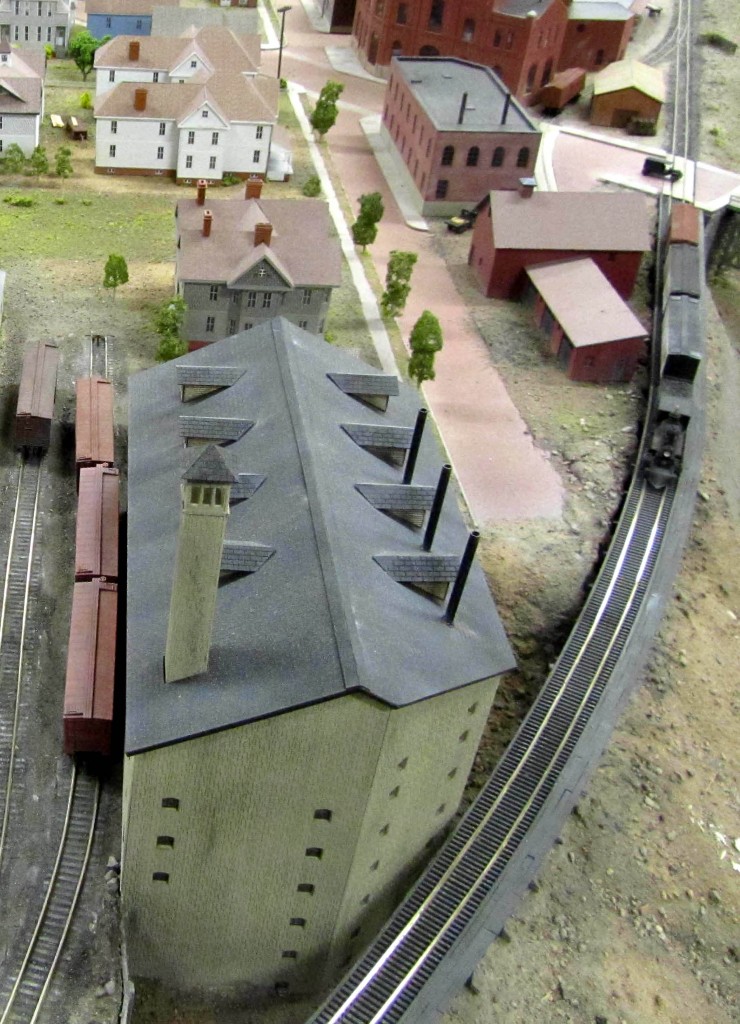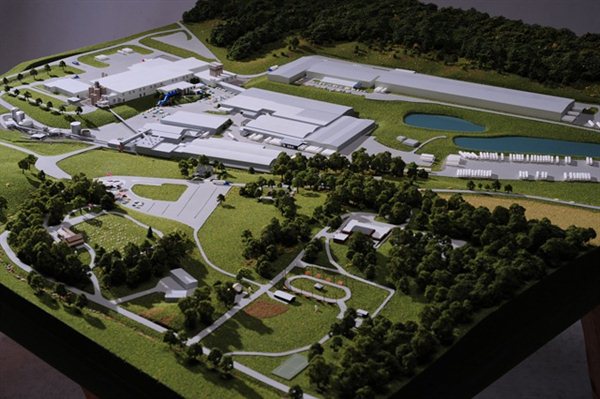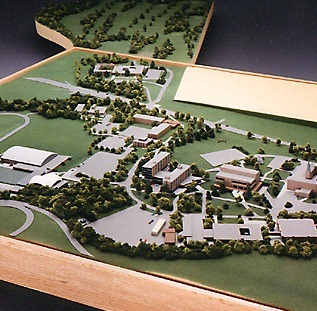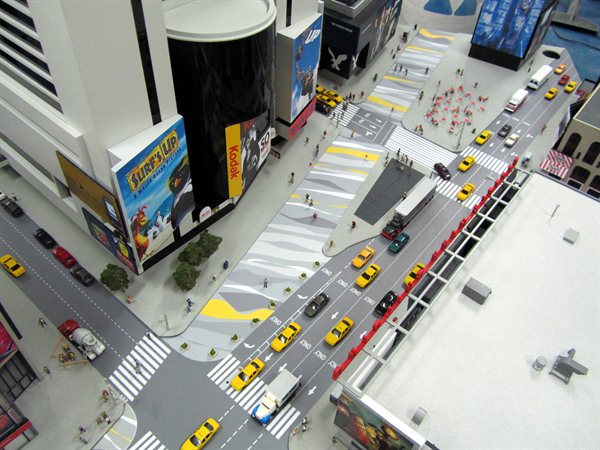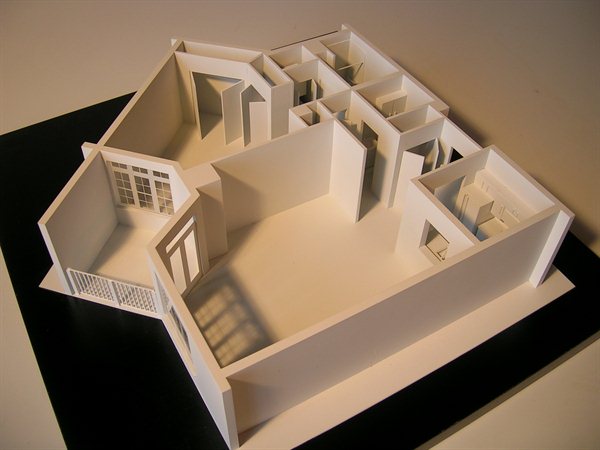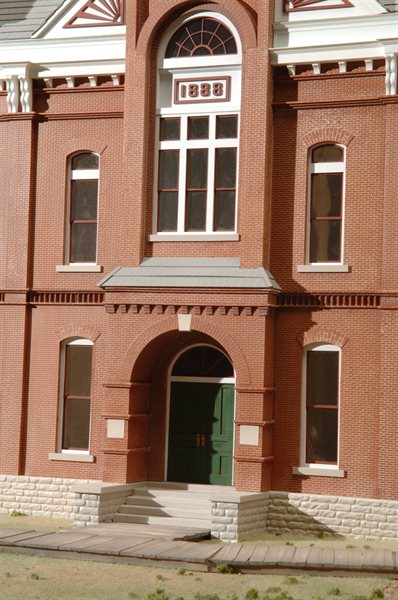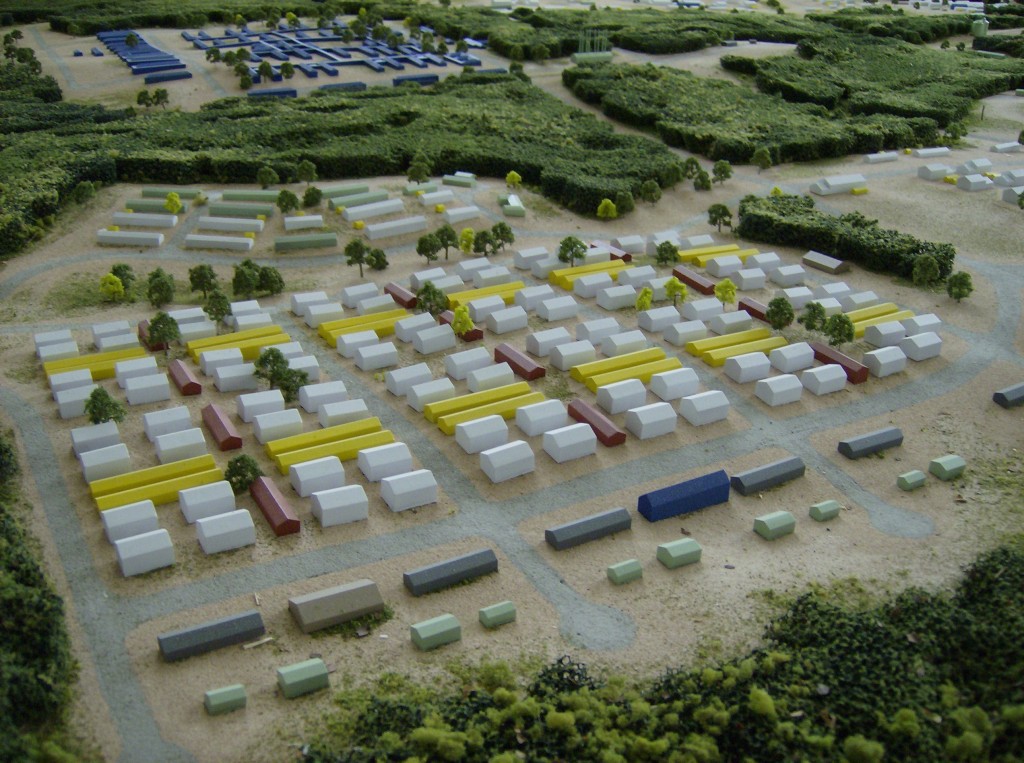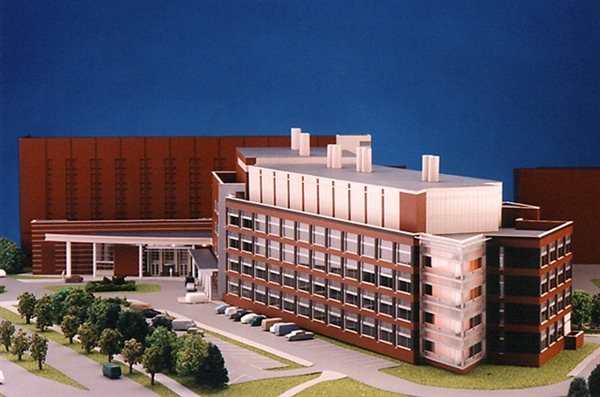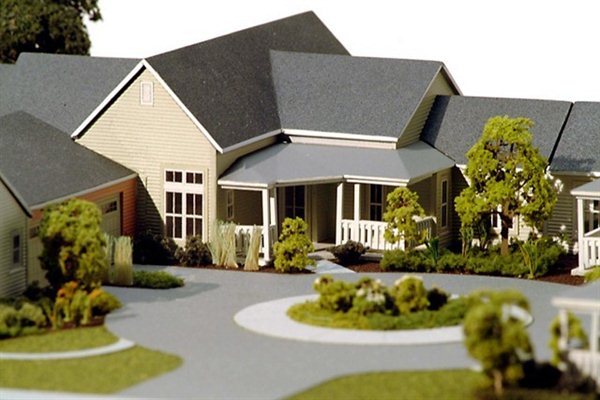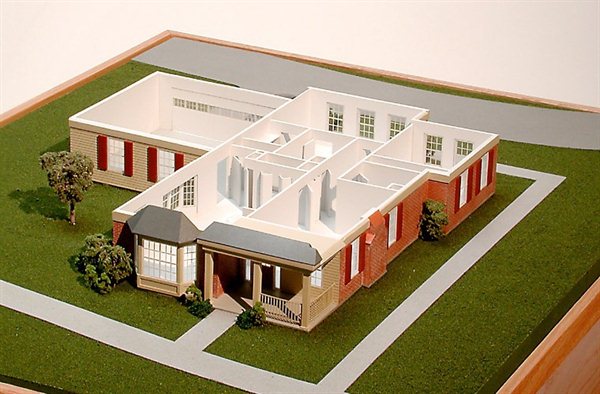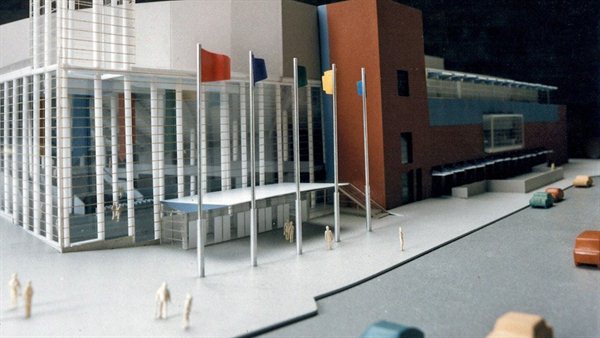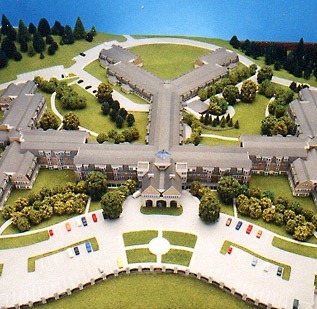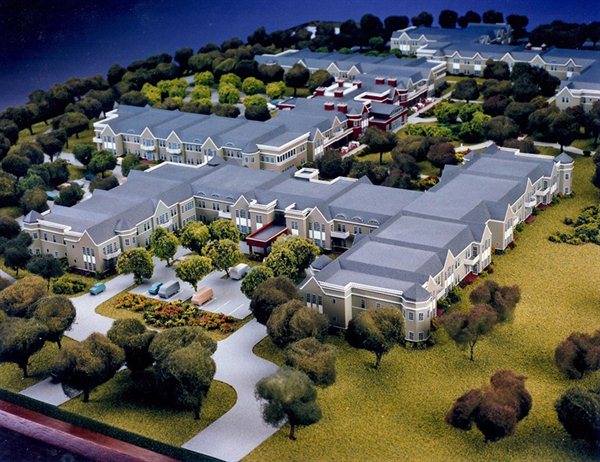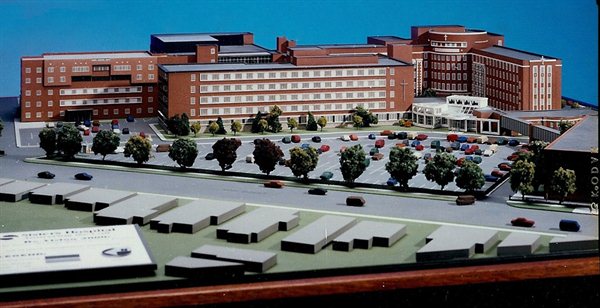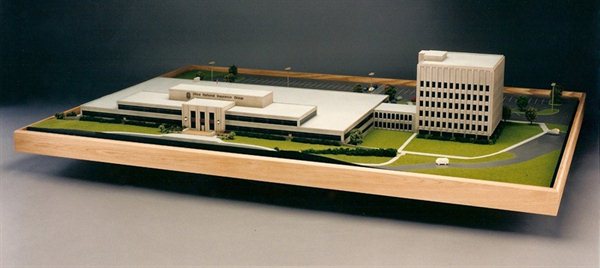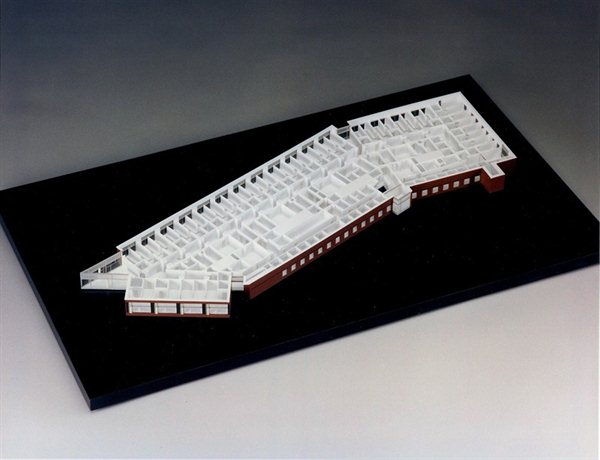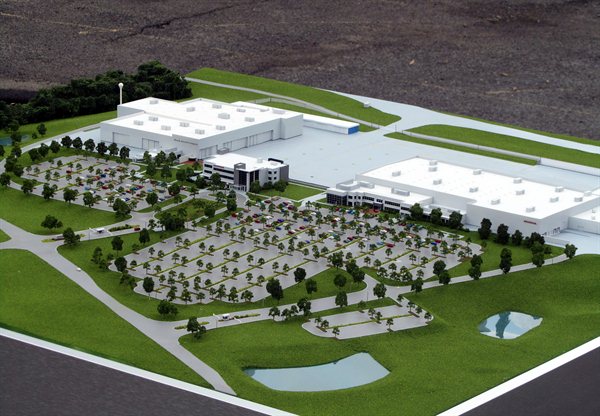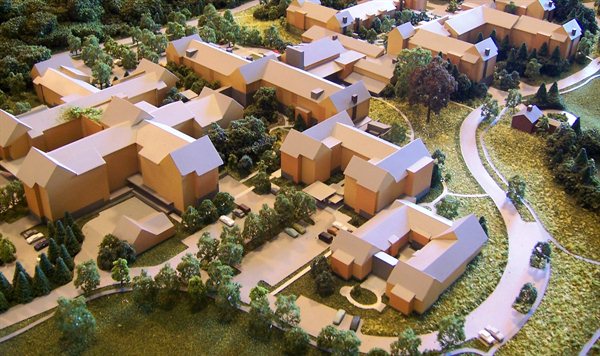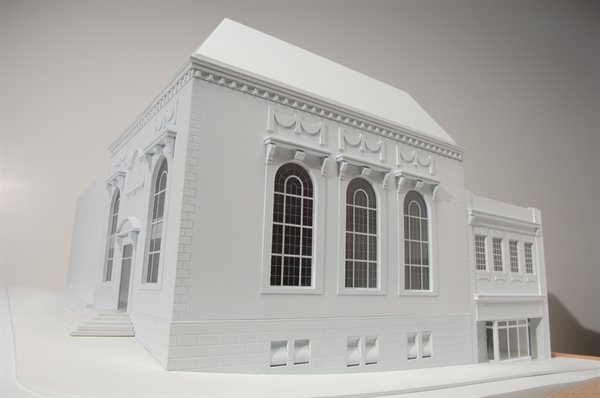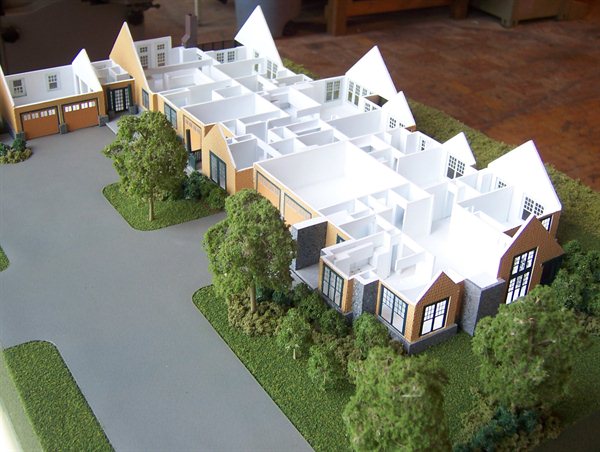Architectural Models
KiwiMill has been creating Architectural Models for the past 20 years, including historic landmark buildings, commercial & residential development, military bases, urban landscapes, and retirement communities.
Architectural models, like most scale representations, are used as a communication tool, and the higher the quality, the more effective the message. The key to outstanding architectural model making, and satisfied clients, is first understanding the purpose the model is going to serve. What do you want your model to say? What will it be used for? Architectural models are used for a variety of circumstances including:
- Fundraising
- Sales
- Evaluating a design
- Permit / Application approval
- Planning and development
- Display
- Education / Training
There are sub-categories within these architectural model uses, as well as overlapping purposes. KiwiMill architectural model makers work with our clients to determine the essence of what needs to be communicated with the project. This helps drive the type of architectural models that will be built, along with what scale to use.
Types of architectural models vary just as their purposes do:
There are simple massing models where monochrome cubes or blocks might be used to represent buildings, emphasizing placement of structures and their context. Detail level on models of this type is typically minimal to accentuate the physical space in relationship to its surroundings.
A site model depicts buildings and the areas around them, such as roads, parking lots, landscaping and cars.
Architectural display models are often very detailed and include such things as lush landscaping, lighting, and other highly realistic features. A museum quality architectural model is expected to last generations, be made of the finest available materials and represent a master model maker’s most meticulous work.
An interior model shows exactly that – what’s inside a space. It may involve a lift off roof or side cut aways for viewing. It might have very detailed furniture, finishes and miniaturized accessories, or be a simple design that emphasizes lay out and flow of rooms.
An urban model typically depicts larger areas, whether it be city blocks, part of a town or a whole community. Detail can vary greatly on these as well and is usually determined by the scale that was chosen for the project.
Landscape architecture models emphasise the trees, plantings, grasses as well as any structures, bodies of water and unique terrain features that might be included in the area depicted.
An architectural diorama attempts to tell a story visually. It includes all the elements necessary to represent a place or moment in time. A diorama may not be completely to scale, but depict objects in the background purposefully smaller in order to give the illusion of depth or distance.
A topographic model shows the elevations, shapes and features of a particular land surface.
There are other types of architectural models but the importance lies in matching the purpose of the model with its design.
Similarly, scale is chosen by determining what the model needs to convey. Two main questions need to be answered when determining the scale of an architectural model. How much area needs to be covered and how much detail needs to be shown?
When a large area is being depicted, such as a site map, the scale is usually smaller. This way more area can be displayed without the over all dimensions of the model becoming too unwieldy. Detail level may be lower, in part because things are less visible at a smaller scale.
If only one building is being depicted, the scale is usually larger. Detail on a larger scale model is much more noticeable and will have a greater visual impact.
When a model maker communicates well with a client, and exhibits superior model making skills, the resulting architectural model conveys the message that was intended. This is the outcome KiwiMill architectural model makers strive for.

Flight of Five Canal Model
This canal model was built for a museum display. The site model depicts a set of working locks. A lock…
3D Printed Architectural Model
This 3D printed architectural model depicts a retirement home community. Now that architectural drawings for new construction are being drawn…
Art Tower Model
This art tower model was created as a prop for an art show installation. Our client needed an underground storage vault…
Warehouse Model
This warehouse model was built in 1" = 35' scale. It represents a new facility being built by our client. The…
Historical Site Model of Native American Community
This historical site model was created for a museum in Western NY. The model depicts a community of Native American Seneca people living in…
Longhouse Replica
KiwiMill was commissioned to create an 11 foot longhouse replica for the Seneca Arts and Cultural Center this past summer. The…
Brass Etched Architectural Prop Model
This architectural prop model was a rush order for a photo shoot. Only the front facade of the building need…
Retirement Community Model with Lift Off Roof
This architectural retirement community model was built as a sales tool for developers. The retirement community model was designed using…
Architectural Model of College Building
This architectural model was the result of a campus building expansion. The donor was presented with this scale model of…
Mill Seat Landfill Architectural Model
A local landfill was running out of space. This architectural model was built to inform the local community about a…
Water Purification System Diorama
This diorama model features a company’s water purification system. Used in military field operations and emergency response situations, this equipment…
Retirement Community Architectural Model
This architectural model was built for a developer in Rochester, NY. Retirement community architectural models are especially helpful as sales…
Architectural Site Model of Lakefront
This is an architectural site model of a lakefront development. The lake and surrounding property is located in Canandaigua, NY.…
Retirement Community Architectural Model
This architectural model project was a site model for a Chicago retirement community The architect is Dorsky Hodgson + Partners…
House Model – TV Show Prop
This house model was built for Cavco Industries, Inc. They were in need of a house model for a prop…
High Rise Apartment Building Architectural Model
This project is an architectural model of High Rise Apartment Building. This architectural model was in a very large scale…
Historical Museum Diorama Of Genesee Brewery
This museum diorama was commissioned by our client in Rochester, NY to be featured in their exhibit at the Genesee…
Bush Beans Architectural Model
Architectural model of the Bush Beans Plant. This factory site model shows the facilities and surrounding grounds of their headquarters…
Retirement Community Architectural Model
This architectural model project was a retirement community in Portland, ME. The architect was EGA. The scale was 1/16" =…
Architectural Massing Model
This architectural massing model project depicted a colored massing model of master plan. The client was St. John Fisher College,…
Times Square Model
To create a Times Square model, KiwiMill used Google Earth to download pictures of this NYC icon. Looking at commonly…
Architectural Model Interiors
These are examples of architectural model interiors without added details such as furniture, appliances and other household objects. These models…
Court House Architectural Model
This is an architectural model of an existing Court House in Powhatan, Arkansas.
Military Base Architectural Model
This architectural model depicts a military base, Camp Pike. It is very small in scale in order to cover a…
Research Center Architectural Model
This architectural model project was for the University of Rochester Research Center. The architect: Perkins & Will. The scale: 1/16" = 1…
Retirement Cottage Architectural Model
This architectural model project was a retirement cottage with a lift off roof. The architect was Dorsky Hodgson + Partners The…
Retirement Cottage Architectural Model
This architectural model project was a Retirement Cottage with a lift off roof. The architect was CSD. The scale was…
Baton Rouge Architectural Model
Project: 17” sq. Baton Rouge monochrome architectural model Client: State of Louisiana Scale: 1”= 10'
Architectural Urban Model
Urban model of a building in Rochester, NY. Formally known as the War Memorial, it is currently called the The Blue…
Hoyt-Potter House Architectural Model
This architectural model was created to preserve and restore a historic landmark in Rochester, NY. Project: Hoyt-Potter House Client: Landmark…
Retirement Community Architectural Model
Architectural Model Project: Retirement Community in Nashua, NH Architect: EGA Scale: 1/16" = 1foot Photo: David Mohney This is a…
Retirement Cottage Architectural Model
Architectural Model Project: Retirement cottage duplex with a lift off roof. Architect: Perkins Eastman Scale: 1/4" = 1'
Retirement Community Architectural Model
This is a large architectural model of a retirement community. Retirement community models help sales offices pre-sell the units before…
Architectural Model of a Hospital
This is an architectural model of a hospital and surrounding community.
Office Building Architectural Model
Architectural model of an office building for the Utica National Insurance Group.
Interior Space Architectural Model
Small architectural model detailing the interior space of a building.
Tiny House Architectural Model
This project is an architectural model of a house in very small scale.
Skate Park Architectural Model
This is an architectural model of a proposed skate park in Rochester, NY. The model is being used for fundraising…
Seneca Falls, NY Diorama Museum Model
This museum model depicts Seneca Falls, NY circa 1855 The client was the Seneca Falls Museum. The scale: 1”= 87…
Architectural Model of Honda Aircraft Headquarters
An architectural model of the Honda Aircraft Headquarters, Research, and Production facility in Greensboro, North Carolina. The design of this…
Residential Massing Model
This is an example of a residential massing model. Houses are represented rather simply with blocks and cubes although the…
Architectural White Models
These are examples of white models created for clients that want to emphasize clean lines and spacial relationships. These are…
Housing Development Model
This is an architectural housing development model depicting a residential area with streets and landscaping.
Architectural Model with Removeable Rooftop
This architectural model had a removable roof to reveal a white interior space.
Trade Show Booth Model
This trade show booth model, made for Spoon Exhibits allowed the exhibit company to show their customer the design of…

Flight of Five Canal Model
This canal model was built for a museum display. The site model depicts a set of working locks. A lock…
3D Printed Architectural Model
This 3D printed architectural model depicts a retirement home community. Now that architectural drawings for new construction are being drawn…
Art Tower Model
This art tower model was created as a prop for an art show installation. Our client needed an underground storage vault…
Warehouse Model
This warehouse model was built in 1" = 35' scale. It represents a new facility being built by our client. The…
Historical Site Model of Native American Community
This historical site model was created for a museum in Western NY. The model depicts a community of Native American Seneca people living in…
Longhouse Replica
KiwiMill was commissioned to create an 11 foot longhouse replica for the Seneca Arts and Cultural Center this past summer. The…
Brass Etched Architectural Prop Model
This architectural prop model was a rush order for a photo shoot. Only the front facade of the building need…
Retirement Community Model with Lift Off Roof
This architectural retirement community model was built as a sales tool for developers. The retirement community model was designed using…
Architectural Model of College Building
This architectural model was the result of a campus building expansion. The donor was presented with this scale model of…
Mill Seat Landfill Architectural Model
A local landfill was running out of space. This architectural model was built to inform the local community about a…
Water Purification System Diorama
This diorama model features a company’s water purification system. Used in military field operations and emergency response situations, this equipment…
Retirement Community Architectural Model
This architectural model was built for a developer in Rochester, NY. Retirement community architectural models are especially helpful as sales…
Architectural Site Model of Lakefront
This is an architectural site model of a lakefront development. The lake and surrounding property is located in Canandaigua, NY.…
Retirement Community Architectural Model
This architectural model project was a site model for a Chicago retirement community The architect is Dorsky Hodgson + Partners…
House Model – TV Show Prop
This house model was built for Cavco Industries, Inc. They were in need of a house model for a prop…
High Rise Apartment Building Architectural Model
This project is an architectural model of High Rise Apartment Building. This architectural model was in a very large scale…
Historical Museum Diorama Of Genesee Brewery
This museum diorama was commissioned by our client in Rochester, NY to be featured in their exhibit at the Genesee…
Bush Beans Architectural Model
Architectural model of the Bush Beans Plant. This factory site model shows the facilities and surrounding grounds of their headquarters…
Retirement Community Architectural Model
This architectural model project was a retirement community in Portland, ME. The architect was EGA. The scale was 1/16" =…
Architectural Massing Model
This architectural massing model project depicted a colored massing model of master plan. The client was St. John Fisher College,…
Times Square Model
To create a Times Square model, KiwiMill used Google Earth to download pictures of this NYC icon. Looking at commonly…
Architectural Model Interiors
These are examples of architectural model interiors without added details such as furniture, appliances and other household objects. These models…
Court House Architectural Model
This is an architectural model of an existing Court House in Powhatan, Arkansas.
Military Base Architectural Model
This architectural model depicts a military base, Camp Pike. It is very small in scale in order to cover a…
Research Center Architectural Model
This architectural model project was for the University of Rochester Research Center. The architect: Perkins & Will. The scale: 1/16" = 1…
Retirement Cottage Architectural Model
This architectural model project was a retirement cottage with a lift off roof. The architect was Dorsky Hodgson + Partners The…
Retirement Cottage Architectural Model
This architectural model project was a Retirement Cottage with a lift off roof. The architect was CSD. The scale was…
Baton Rouge Architectural Model
Project: 17” sq. Baton Rouge monochrome architectural model Client: State of Louisiana Scale: 1”= 10'
Architectural Urban Model
Urban model of a building in Rochester, NY. Formally known as the War Memorial, it is currently called the The Blue…
Hoyt-Potter House Architectural Model
This architectural model was created to preserve and restore a historic landmark in Rochester, NY. Project: Hoyt-Potter House Client: Landmark…
Retirement Community Architectural Model
Architectural Model Project: Retirement Community in Nashua, NH Architect: EGA Scale: 1/16" = 1foot Photo: David Mohney This is a…
Retirement Cottage Architectural Model
Architectural Model Project: Retirement cottage duplex with a lift off roof. Architect: Perkins Eastman Scale: 1/4" = 1'
Retirement Community Architectural Model
This is a large architectural model of a retirement community. Retirement community models help sales offices pre-sell the units before…
Architectural Model of a Hospital
This is an architectural model of a hospital and surrounding community.
Office Building Architectural Model
Architectural model of an office building for the Utica National Insurance Group.
Interior Space Architectural Model
Small architectural model detailing the interior space of a building.
Tiny House Architectural Model
This project is an architectural model of a house in very small scale.
Skate Park Architectural Model
This is an architectural model of a proposed skate park in Rochester, NY. The model is being used for fundraising…
Seneca Falls, NY Diorama Museum Model
This museum model depicts Seneca Falls, NY circa 1855 The client was the Seneca Falls Museum. The scale: 1”= 87…
Architectural Model of Honda Aircraft Headquarters
An architectural model of the Honda Aircraft Headquarters, Research, and Production facility in Greensboro, North Carolina. The design of this…
Residential Massing Model
This is an example of a residential massing model. Houses are represented rather simply with blocks and cubes although the…
Architectural White Models
These are examples of white models created for clients that want to emphasize clean lines and spacial relationships. These are…
Housing Development Model
This is an architectural housing development model depicting a residential area with streets and landscaping.
Architectural Model with Removeable Rooftop
This architectural model had a removable roof to reveal a white interior space.
Trade Show Booth Model
This trade show booth model, made for Spoon Exhibits allowed the exhibit company to show their customer the design of…

